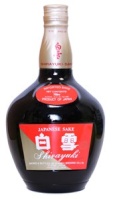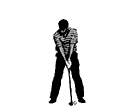Brevard Show 09/25/2011
+12
fiona
bonsai monkey
carlos
Sam Ogranaja
coh
will baddeley
Russell Coker
JMcCoy
dick benbow
Rob Kempinski
EdMerc
Billy M. Rhodes
16 posters
Page 3 of 4
Page 3 of 4 •  1, 2, 3, 4
1, 2, 3, 4 
 Re: Brevard Show 09/25/2011
Re: Brevard Show 09/25/2011
Can any Mods do a moderation here? Its getting personal don't you think?.
If this were my thread it will be closed by now.
Please stick to the tree or technique involved and not targeted on the person or his/her personal style and some other trees not posted in this thread.
regards,
jun
If this were my thread it will be closed by now.
Please stick to the tree or technique involved and not targeted on the person or his/her personal style and some other trees not posted in this thread.
regards,
jun
Guest- Guest
 Re: Brevard Show 09/25/2011
Re: Brevard Show 09/25/2011
carlos wrote:Russell Coker wrote:Actually I dont... Sorry.
Yes you do...selective amnesia....
You'll have to forgive me Carlos. I've been out of "the loop" for a long time now. I do recall JL mentioning you and Bucida recently.

Russell Coker- Member
 Re: Brevard Show 09/25/2011
Re: Brevard Show 09/25/2011
A moderatorial comment:
As I say to my students at college:
Engage brain before writing!!!!!!!!!!!
I'm saying no more than that as I am seeing positive attempts to return to civility. Please can we keep it heading that way.
As I say to my students at college:
Engage brain before writing!!!!!!!!!!!
I'm saying no more than that as I am seeing positive attempts to return to civility. Please can we keep it heading that way.

fiona- Member
 Re: Brevard Show 09/25/2011
Re: Brevard Show 09/25/2011
Brain..... engaged....... Have to say, the quality of the trees shown in the pics is not very good in my opinion.
Peter
Peter

landerloos- Member
 Re: Brevard Show 09/25/2011
Re: Brevard Show 09/25/2011
One little point from the prior discussion

This tree was also featured in her book and on a Taiwanese postage stamp.
Flat top pine trees are very common in Takamatsu gardens (Takamatsu means Tall Conifer). Haven't seen a bonsai one but I'm sure there are some out there.
This wasn't Kokufuten, but it was a major ASPAC show in Taiwan. Sort of a flat top Japanese Black Pine by Amy Liang. Not a Bald Cypress flattop but certain a pine flat top and Amy is a well known bonsai designer.Russell Coker wrote:
Yes, and we do - when it comes to styles. But don't expect to be seeing any flat-top Japanese black pines or baynan style trident maples at Kokufu-ten.

This tree was also featured in her book and on a Taiwanese postage stamp.
Flat top pine trees are very common in Takamatsu gardens (Takamatsu means Tall Conifer). Haven't seen a bonsai one but I'm sure there are some out there.

Rob Kempinski- Member
 Re: Brevard Show 09/25/2011
Re: Brevard Show 09/25/2011
Is it a flattop????
To me its a kind of windswept though.
Peter
To me its a kind of windswept though.
Peter

landerloos- Member
 Re: Brevard Show 09/25/2011
Re: Brevard Show 09/25/2011
landerloos wrote:Is it a flattop????
To me its a kind of windswept though.
Peter
is the top flat?

Rob Kempinski- Member
 Re: Brevard Show 09/25/2011
Re: Brevard Show 09/25/2011
Yes it is, but a flattop to me is more of an african image tree, so no to me its not a flattop at all Rob.
Peter
Peter

landerloos- Member
 Re: Brevard Show 09/25/2011
Re: Brevard Show 09/25/2011
I have to agree with Peter on his last comment. I don't think that Russell was talking about this type of tree. I see a variation on windswept/ semi cascade?. I also see a lot of years in refinement with the branching and ramification but the look of a tree without intervention.

will baddeley- Member
 Re: Brevard Show 09/25/2011
Re: Brevard Show 09/25/2011
I see windswept too. And I really was referring to the way bald cypress are styled as flat top.

Russell Coker- Member
 Re: Brevard Show 09/25/2011
Re: Brevard Show 09/25/2011
Russell Coker wrote:Sam Ogranaja wrote:Rob....Great tree!!!!!
Seriously??? That really makes me wonder where bonsai in Americai is headed, and what the "teachers" are teaching. Sad, really.
Wow...that's the biggest compliment I've ever received. For my words to be taken as gospel of where American bonsai is headed is HUGE, especially given the fact I'm not an American citizen.
No offense taken though Russell, but please keep in mind I'm a beginner and haven't seen as many trees as you or been in it as long as you. I hope to stay in it a long time. I must also admit that I am biased towards Rob's trees. What can I say, I personally think he does good work and like he said, this is a work in progress. I can visualize the future of this tree and it looks promising.
Have a great week everyone!!!
Sam

Sam Ogranaja- Member
 Re: Brevard Show 09/25/2011
Re: Brevard Show 09/25/2011
Rob Kempinski wrote:One little point from the prior discussionThis wasn't Kokufuten, but it was a major ASPAC show in Taiwan. Sort of a flat top Japanese Black Pine by Amy Liang. Not a Bald Cypress flattop but certain a pine flat top and Amy is a well known bonsai designer.Russell Coker wrote:
Yes, and we do - when it comes to styles. But don't expect to be seeing any flat-top Japanese black pines or baynan style trident maples at Kokufu-ten.
This tree was also featured in her book and on a Taiwanese postage stamp.
Flat top pine trees are very common in Takamatsu gardens (Takamatsu means Tall Conifer). Haven't seen a bonsai one but I'm sure there are some out there.
...I'll stick with the tree or trees posted and style.
I think this is neither a typical "Savannah/African flat top style" nor a windswept style.
Windswept- ALL branches not just the main or the major branches were formed by the wind direction. secondary or tertiary and the smallest branchlets are going in the wind direction if the image portrayed were a moment (of the windy time) caught in time or captured in freeze frame.
Flat top- It is not a typical flat top if you will confine the definition of the "flat top style" in the African savannah flat top style. but flat top trees are not just confined in the African continent, Flat top trees are commonly found in the countries near or within the equator, reason for this is that the tree responds to the midday sun directly overhead for most time of the entire year. thus this natural behavior of the tree helps itself to maximize its exposure to the sun. Taiwan and the Philippines and other South east Asian countries got flat top trees close to what miss Amy Liang tree above.
The main branch movement that seems to be in a windswept design portrays a matured tree growing near a body of water area like river or lake- reason for this is that the roots of the trees growing in this habitat seeks water where it is most abundant, and chances are the branches above will reflect the roots direction below.
Or could be a tree growing near or in a cliff where the the natural tendency of the main branches will move away from the shadows of the cliff to seek light, and if it is a tree near the equator it will form a flat top style for its secondary and twigs, as stated above.
This a natural design of a tree and not confined in the "within the box" approach of most people.
I am not trying to fan the flaming hot discussion above of my good friends,,,,but I don't want other guys reading this thread to be misled of what this particular design might be, specially the "not experts" like me.
I am not an expert on trees but just a mere natural observer and lover of trees. Chill out guys.
regards,
jun
Guest- Guest
 Re: Brevard Show 09/25/2011
Re: Brevard Show 09/25/2011
Good points Jun.
Might be good to start a thread talking about flat top style. With global input it might change how people view it. Certainly trunk and branch arrangement have a lot to do with it, that is styles can be defined by trunk shape (eg formal upright) or branch placement ( eg windswept). Then there are hybrids - some of each. Of course last time I asked a tree what style it was it said "WTF?".
Might be good to start a thread talking about flat top style. With global input it might change how people view it. Certainly trunk and branch arrangement have a lot to do with it, that is styles can be defined by trunk shape (eg formal upright) or branch placement ( eg windswept). Then there are hybrids - some of each. Of course last time I asked a tree what style it was it said "WTF?".

Rob Kempinski- Member
 Re: Brevard Show 09/25/2011
Re: Brevard Show 09/25/2011
...Same approach I am doing with few of my trees.
Main branch moves to the right above an imaginary water, Then secondary and other branches being developed to move upward to seek sunlight. then hopefully form a more define and ramified upper structure closed to flat top. A flat top", semicascade and "Ficus" ( banyan looks for a change) design but still within the bounds of a real tree behavior.

regards,
jun
Main branch moves to the right above an imaginary water, Then secondary and other branches being developed to move upward to seek sunlight. then hopefully form a more define and ramified upper structure closed to flat top. A flat top", semicascade and "Ficus" ( banyan looks for a change) design but still within the bounds of a real tree behavior.

regards,
jun
Guest- Guest
 Re: Brevard Show 09/25/2011
Re: Brevard Show 09/25/2011
Perfectly chilled out Jun...Thanks for asking. I did say variation of windswept/cascade style. Exactly what you would find on the side of a cliff/riverbank.
The tree was posted as an example of a flat top tree to contradict what Russell was saying( and quite calmly too I might add)
An interesting topic albeit misinterpreted at times.
The tree was posted as an example of a flat top tree to contradict what Russell was saying( and quite calmly too I might add)
An interesting topic albeit misinterpreted at times.

will baddeley- Member
 Re: Brevard Show 09/25/2011
Re: Brevard Show 09/25/2011
will baddeley wrote:Perfectly chilled out Jun...Thanks for asking. I did say variation of windswept/cascade style. Exactly what you would find on the side of a cliff/riverbank.
The tree was posted as an example of a flat top tree to contradict what Russell was saying( and quite calmly too I might add)
An interesting topic albeit misinterpreted at times.
You are welcome Will!
yup, a variation it is, More of a hybrid. And I am with you and Russell regarding the ramification of trees, that will always be the bottom line no matter what design you wanted or where ever in the planet you are.
Though i find it better for some trees to be exhibited in its "not so Complete" form but not too raw that is. then explain to the viewer that it is still in the process of refinement as part of bonsai making process...It wont be degrading to the ego of the exhibitor but instead it will give some insights to the "naives( in bonsai)" viewer that not all the time bonsai looks always so perfect.
regards,
jun
Guest- Guest
 Re: Brevard Show 09/25/2011
Re: Brevard Show 09/25/2011
jun wrote: And I am with you and Russell regarding the ramification of trees, that will always be the bottom line no matter what design you wanted or where ever in the planet you are.
I agree fully ramification is one sign of a refined tree; seven , ten, 15 levels of ramifiaction. But have you seen the Chinese style where they cut off most of the ramification?

Or this?

Saw similar trees all over southern China.
Pretty sure China is on planet Earth.

Rob Kempinski- Member
 Re: Brevard Show 09/25/2011
Re: Brevard Show 09/25/2011
will baddeley wrote:Perfectly chilled out Jun...Thanks for asking. I did say variation of windswept/cascade style. Exactly what you would find on the side of a cliff/riverbank.
The tree was posted as an example of a flat top tree to contradict what Russell was saying( and quite calmly too I might add)
An interesting topic albeit misinterpreted at times.
Deserves more discussion so I started a new thread about it to see where the real misinterpretation lies.

Rob Kempinski- Member
 Re: Brevard Show 09/25/2011
Re: Brevard Show 09/25/2011
Rob Kempinski wrote:will baddeley wrote:Perfectly chilled out Jun...Thanks for asking. I did say variation of windswept/cascade style. Exactly what you would find on the side of a cliff/riverbank.
The tree was posted as an example of a flat top tree to contradict what Russell was saying( and quite calmly too I might add)
An interesting topic albeit misinterpreted at times.
Deserves more discussion so I started a new thread about it to see where the real misinterpretation lies.
Still pretty chilled. You would make a damn fine politician there Rob.
From a tree you had offers on and no mention of needing more work until it was pointed out, to......being offended when no offence was meant, to.....an example of a flat topped tree that has nothing to do with Kokufu ten, to......the whole of Florida and the state of its teaching, to.......Chinese trees with the ram cut off. Good work.

will baddeley- Member
 Re: Brevard Show 09/25/2011
Re: Brevard Show 09/25/2011
To keep the discusion going Rob, I dont see chinese trees as bonsai (I know that they are)
For me a bonsai is a tree shaped in a more japanese aproach, I do like some of the chinese trees.
Now back to the show, why is it so hard for people to regognize that some of the trees showed on the ten are no good.
I think a lot of people from the usa could learn something by visiting the major european shows.
I do not write this to offend any one, well to my trees I now what i have, therefor my trees are not on tens.
Peter
For me a bonsai is a tree shaped in a more japanese aproach, I do like some of the chinese trees.
Now back to the show, why is it so hard for people to regognize that some of the trees showed on the ten are no good.
I think a lot of people from the usa could learn something by visiting the major european shows.
I do not write this to offend any one, well to my trees I now what i have, therefor my trees are not on tens.
Peter

landerloos- Member
 Re: Brevard Show 09/25/2011
Re: Brevard Show 09/25/2011
will baddeley wrote:Rob Kempinski wrote:will baddeley wrote:Perfectly chilled out Jun...Thanks for asking. I did say variation of windswept/cascade style. Exactly what you would find on the side of a cliff/riverbank.
The tree was posted as an example of a flat top tree to contradict what Russell was saying( and quite calmly too I might add)
An interesting topic albeit misinterpreted at times.
Deserves more discussion so I started a new thread about it to see where the real misinterpretation lies.
Still pretty chilled. You would make a damn fine politician there Rob.
From a tree you had offers on and no mention of needing more work until it was pointed out, to......being offended when no offence was meant, to.....an example of a flat topped tree that has nothing to do with Kokufu ten, to......the whole of Florida and the state of its teaching, to.......Chinese trees with the ram cut off. Good work.
Thanks Will. I'm still trying to connect the dots too!

Russell Coker- Member
 Re: Brevard Show 09/25/2011
Re: Brevard Show 09/25/2011
I think a lot of people from the usa could learn something by visiting the major european shows.
I think that people can always learn by attending major shows.
I think a lot of people from europe could learn something by visiting the major USA shows as well.
Best Regards,
Mark
I think that people can always learn by attending major shows.
I think a lot of people from europe could learn something by visiting the major USA shows as well.
Best Regards,
Mark
Mark- Member
 Re: Brevard Show 09/25/2011
Re: Brevard Show 09/25/2011
"I think a lot of people from the usa could learn something by visiting the major european shows".
I think that people can always learn by attending major shows.
I think a lot of people from europe could learn something by visiting the major USA shows as well.
Best Regards,
Mark
[/quote]
I think that people can always learn by attending major shows.
I think a lot of people from europe could learn something by visiting the major USA shows as well.
Best Regards,
Mark
[/quote]
Mark- Member
 Re: Brevard Show 09/25/2011
Re: Brevard Show 09/25/2011
landerloos wrote:Now back to the show, why is it so hard for people to regognize that some of the trees showed on the ten are no good.
Peter, regarding the quality of the trees at the Brevard Art show I would agree with you, perhaps the trees were not world class, however there were a couple decent ones. This was not a juried show. There were no "check book bonsai", no major imported trees that were in the USA for two weeks prior to the show - almost all were grown from cuttings or local collected stock. It was a "show what you brung" type of show for bonsai hobbyists. Our club has no pretensions of taking on the world nor do we feel a slavish need to mimic Japan style nor display. All comers were invited to show the public what our club does. And show it did, as we attracted a large number of non-bonsai people going through the display. What the show did have was world class comradarie, cooperation among members and a good time, and I'll bet our show had the largest number of bikini or halter top clad spectators of any bonsai show in the world.
BTW, our club is a fun and active club. We put on this show, a zoo show, we maintain a small but permanent exhibit at our local zoo, we are the only bonsai club to fund and sponsor a children's auxiliary in Florida (that I know of), we have artists visit from all over the world and we have over $30K in our checkbook. You never know, we might be creating the next "Kimura" from our group. Not bad for a bunch of yahoos.
You used a key adjective in your sentence - "major". I have visited several shows in Europe, major and not. The quality of the major shows in Europe is very good, comparable to the major US shows like the US National Exhibiiton, or Boon's BIB show. But even at the major shows I've seen a few questionable bonsai. At the lesser quality shows in Europe I have seen the quality go down very similar to what one finds in the USA. I have never been to a European show where everyone is from the same city, I'd imagine the quality would be comparable to a city show in the USA. (Photos have been posted here to reflect that statement.) It's really a simple concept to grasp. A juried show with a selection process will have better trees. This is common in all endeavors. For example local town socceer squads are going to have a hard time beating a national team. One needs to compare similar concepts.landerloos wrote:I think a lot of people from the usa could learn something by visiting the major european shows.
I do not write this to offend any one, well to my trees I now what i have, therefor my trees are not on tens.
Peter
landerloos wrote:To keep the discusion going Rob, I dont see chinese trees as bonsai (I know that they are)
For me a bonsai is a tree shaped in a more japanese aproach, I do like some of the chinese trees.
Very interesting comment. By any chance do you get any Chinese bonsai magazines, especially the initial issue of "China Penjing and Scholar Rocks"? Amazing trees and quite a few articles about Chinese penjing versus Japanese bonsai. Most unfortuantely for me are in Chinese which I can't read, but a enough are in English to get the point. (The photos look great though). I am going to quote one of the English articles, an interview with Sudo Susumu, identifed as a Scene Taoist. (They didn't say but from context of the article I assume Sudo Susumu is a Japanese person living in China). "Today's Japanese bonsai has forgotten the essense of bonsai, because it has been created according to a gardening standard. The natural beauty has been negelected during the procedure of shaping the tree and depicting the form. Many works (sic) take pains on the technical aspects of the surface shape, with little effort to show natural dignity. Moreover there is no work to show the beauty consciousness of Japanese culture, they just establish models instead." Generalizations are tough, but this gentleman's point of view is common in China.
I believe to be a compete bonsai artist one needs to understand and appreciate (not necessarily like) all forms. China to me has great credence as that is were penjing - i.e. bonsai actually started. And if it were a democracy, with 1.5 billion people, they are in the majority

Rob Kempinski- Member
 Re: Brevard Show 09/25/2011
Re: Brevard Show 09/25/2011
landerloos wrote:To keep the discusion going Rob, I dont see chinese trees as bonsai (I know that they are)
For me a bonsai is a tree shaped in a more japanese aproach, I do like some of the chinese trees.Peter
Well, that may be so for you......Chinese bonsai, has only recently begun to gain the notoriety it deserves. Not all Chinese bonsai adhere to the 'tree image' aesthetics you usually associate with pre-concieved notion of what a good tree is, but not all Chinese bonsai schools circumscribe themselves to the same principles. To make a statement to the effects of not considering a Chinese bonsai a bonsai, denotes lack of knowledge and overall generalization of what Chinese bonsai is. There are over seven (7) bonsai schools in China, all of them with distinct characteristics, being the Lignan school the most similar to what modern Japanese bonsai is.
Let's take Japanese bonsai, from a historical perspective. In 1970, the World Famous Osaka Expo and Trade Show took place. As part of the exhibits, one of the most memorable bonsai displays was presented. To this day, countless references of Expo '70 have been made in bonsai journals, magazines and articles. Unfortunately, not many have had the benefit of actually seeing the Conmemorative Album that was published or pictures of this event. To you surprise, this celebrated gathering features hundreds of bonsai, more than 90% of them being root over rock, group plantings and trees trained in the lignan style. To sum up, most of the trees, by modern generalized standards, would be considered 'Sanshu Penjing and Shuihan Penjing. Some of them even have figurines. This is congruent with the fact that the Japanese really thought highly of all things Chinese. To this day, antique Chinese bonsai pottery is regarded as the highest quality. Also, many of the kilns in the Tokoname area of Japan have closed their doors and subcontracted contruction to potters in Yixing, Guanzhou, and Shiwan.
The Chinese lignan school was initially adopted by the Japanese as a means to shape their decidious trees. Decidious trees shaped in the lignan method exhibit superior branch quality, as taper and periodical directional pruning result in ramification mimicking that of a natural tree. In recent years, most decidious trees have been shaped using conifer methods, thus resulting in the familiar mushroom/triangular outline that is most popular in fashion.
In recent years, the Chinese landscape has indeed been a source of inspiration to many famous artists, including Kimura Masahiko and Kobayashi Kunio. Imagery from Huanshan Mountain has been adopted by these artists to display tradition of old, thus giving rebirth to the notion of the high quality of Chinese tradition.
Japanese bonsai masters are, in fact, very good (if not the best) at Bonsai display. Kokufu is not the finest bonsai show in Japan. Taikan Ten or the National Bonsai trend show is indeed the finest. Here, bonsai professionals display their best works, in an effort to raise the bar of style and current bonsai standards. It is not uncommon to see some of the winning entries later exhibited at Kokufu.
In sum, bonsai history and back-ground are important factors whenever making judgement of facts. There is a world of misinformation out there that has given all things Chinese a bad reputation. Remember, whenever learning about an art or trade, it might be a good idea to study its birthplace, in this case China.
Carlos
carlos- Member
Page 3 of 4 •  1, 2, 3, 4
1, 2, 3, 4 
 Similar topics
Similar topics» Bonsai Show at the Brevard Zoo
» Wessex Show 2011
» Wirral Bonsai Members Annual Show 2011
» BSOB Show 11/5/2011
» Midwest Bonsai Show 2011
» Wessex Show 2011
» Wirral Bonsai Members Annual Show 2011
» BSOB Show 11/5/2011
» Midwest Bonsai Show 2011
Page 3 of 4
Permissions in this forum:
You cannot reply to topics in this forum






